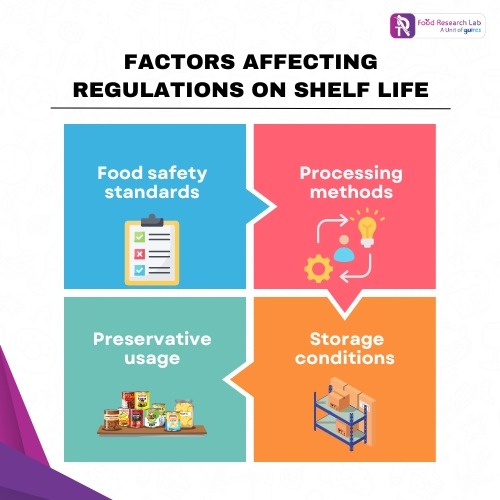Extending Product Shelf Life: Regulatory Perspective
Shelf life and its importance in food and beverage products
Consumers nowadays prioritise high food quality, and they have corresponding expectations that the quality of their food will be maintained at a high level between purchase and consumption. Shelf life is a crucial attribute of all food and beverage products, be it ingredients, raw materials or manufactured products. Shelf life is defined as the time required for a food product to remain safe; retain desired sensory, chemical, physical, and microbiological properties; comply with label declaration about a product’s nutritional content; and be acceptable to the consumer. The undesirable characteristics of a product can be determined by indicators such as any off-flavours and odours and changes to its appearance and texture. Factors influencing the shelf life include processing methods, ingredients, packaging, hygiene and storage and distribution.
Determining and including information about shelf life helps consumers to make informed decisions regarding the purchase of products and prevent wastage.
- Check out our insight on the importance of shelf life for consumers.

Regulations on shelf life
The regulations for the shelf life of food products differ from one region to another, owing to the differences in food safety standards, processing methods, storage conditions and the use of preservatives. The following focuses on the regulatory guidelines by the Food and Drug Administration:
| Regulations | What they Claim | Techniques of shelf-life determination and the duration up to which it can be extended |
| Food Additives & Preservatives:
Food Processing Techniques
Labeling Requirements
Good Manufacturing Practices (GMP)
Food Safety Modernization Act (FSMA)
Packaging
Nutrition and Supplement Facts Labelling
|
Conclusion
Shelf life is a critical component of quality assurance in food and beverage products which ensures safety, nutritional content, and sensory characteristics. Shelf life is among the factors which influence consumers’ purchasing decisions. The regulations for shelf life testing of the products differ based on processing methods, storage conditions and the use of preservatives. One can notice variations among the regions, from the FDA’s rigorous scientific evidence to the EFSA’s emphasis on safety and quality distinctions in ‘use by’ and ‘best before’ dates. FSANZ’s meticulous guidelines in Australia and New Zealand, alongside Japan’s innovative adaptation for online sales, showcase the evolving nature of these standards. As global discussions establish harmonized benchmarks, regular reviews and adaptation are critical to staying in line with ever-changing international regulations and guaranteeing consumer trust and safety.
How Food Research Lab Global Contract R&D can help
Food Research Lab offers B2B solutions in product development and shelf stability studies for food, beverages, nutraceuticals, cosmeceuticals, herbal and animal food products. We comprise a team of food scientists and technologists who aid in conducting shelf-life testing of the various ingredients used to formulate the products. We adopt industry-best practices from evaluating factors (storage conditions, packaging materials, product composition, handling and distribution) influencing shelf life from formulation to packaging. Our team of experts employ various methods such as accelerated shelf-life testing, challenge testing, real-time shelf life, and iterative or predictive methodology based on the product, urgency, and accuracy in the evaluation. Our team conducts rigorous testing under various conditions, ensuring accuracy in shelf-life analysis. We leverage advanced methodologies to increase marketability and minimize risks. Moreover, our approach fosters innovation and enables clients to launch products with an extended shelf life, complying with food safety standards set by authorities like the FSSAI, USFDA or EFSA. Finally, we assist with product labelling, including “best before”, “use by”, or “sell dates”, based on study findings.
To know more about the types of products with extended shelf life we have formulated, check out our case studies.

Let’s create something Innovative and Delicious together
Food Research Lab strives for excellence in new Food, Beverage and Nutraceutical Product Research and Development by offering cutting edge scientific analysis and expertise.




